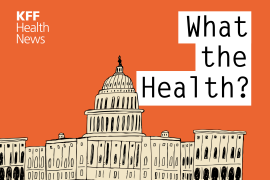Health IT Incentive Funding in Stimulus Package Might Not Spur Technology Adoption, According to Report
Health information technology funding included in the recently enacted federal stimulus package might not be enough to incentivize some physicians to make the initial installation investment, according to a study released on Monday by Avalere Health, the AP/San Francisco Chronicle reports. The stimulus package includes $19 billion for health IT, including $17 billion for incentives and penalties to encourage physicians and hospitals to adopt electronic health records between 2011 and 2015 (Werner, AP/San Francisco Chronicle, 3/9). The money for health IT is meant to reimburse physicians and hospitals who adopt electronic systems and who demonstrate "meaningful use" -- meaning that they use the systems to communicate to other providers in addition to entering patient health data (Leggett, San Jose Mercury News, 3/9).
Using government cost estimates, the Avalere study found that it would cost about $124,000 for a single physician or small practice to upgrade to EHRs between 2011 and 2015, but incentives would total only $44,000. In one scenario, Avalere found that in 2015 -- when the government would start imposing penalties on physicians not using EHRs -- that the penalties would amount to $5,100 annually -- far less than the cost of installing and maintaining the cost of an electronic system.
The expense of adoption is exacerbated by the lack of compatibility standards for electronic systems. The Obama administration has yet to appoint a director of the Office of the National Coordinator for Health IT, who will be in charge of setting rules detailing operability standards and how physicians and hospitals can qualify for the money (AP/San Francisco Chronicle, 3/9). Sam Karp, vice president of programs at the California HealthCare Foundation, said, "Just adding computers won't change the way physicians practice -- they need to network with other physicians, labs and pharmacies" (San Jose Mercury News, 3/9).
Jenny Backus, an HHS spokesperson, said, "The investments are designed to help make new systems more affordable for doctors and were never intended to wholly subsidize the adoption of this technology," adding, "As the market for health IT expands, the costs for these systems will come down." Jon Glaudemans, a senior vice president at Avalere, said, "Frankly if the choice is between continuing health insurance for your staff and buying a new IT system that gets paid back over five years, that's going to challenge an office manager or administrator anywhere in the country" (AP/San Francisco Chronicle, 3/9).
Additional information about the study is available online.
Comparative-Effectiveness Research Examined
An Institute of Medicine panel will release by the end of June a priority list of up to 50 medical questions to help the federal government determine where to start using the $1.1 billion in the recently enacted federal stimulus package for research comparing the effectiveness of different pharmaceuticals, medical devices and treatments, the AP/Austin American-Statesman reports. Currently the U.S. "has a scattershot method for determining best medicine," the AP/American-Statesman reports, with the Agency for Healthcare Research and Quality spending about $30 million annually to review evidence of select tests and treatments and NIH occasionally conducting costly, long-term studies on contested therapies.
According to the AP/American-Statesman, "Federal scientists are acutely aware" that many studies do not account for wide variations in responses to treatments by minorities or other subgroups. Elizabeth Nabel, NIH's heart chief, said, "Medical decision-making is rarely black-and-white," adding, "We see certainly helping to provide additional evidence that really guides physicians and individuals in sorting through the shades of gray." According to AP/American-Statesman, "A bigger question is how to ensure that patients get the opportunity to consider such findings." AHRQ has started providing information in easy-to-understand consumer brochures, and an Oregon program called the Drug Effectiveness Review Project conducts comparative research on competing drugs that is used by the directors of 14 states' Medicaid programs (Neergaard, AP/Austin American-Statesman, 3/10).






